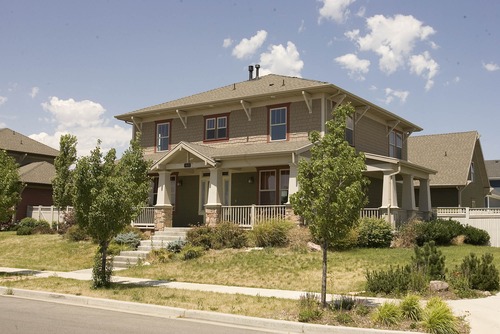This is an archived article that was published on sltrib.com in 2014, and information in the article may be outdated. It is provided only for personal research purposes and may not be reprinted.
Utahns are not moving to different cities or homes nearly as much these days, according to new U.S. Census Bureau estimates.
"This data show just a very minimal flow of people, nothing like the rip-roaring '90s" and other times before the recession hit in 2007, said Pam Perlich, senior research economist at the University of Utah.
The Census Bureau recently released survey data collected from 2008-2012 that estimate annual county-to-county moves by Americans.
After reviewing it, Perlich said, "migration has just been almost at a standstill. Certainly there are people moving around, but not at the major rates that we saw during the high financial bubble and construction boom of the 1990s."
One reason, she said, is lingering effects of the recession and subsequent slow economic growth.
The tough economy eroded the income of many people who were "still saddled with very high mortgages, so they are stuck," Perlich said. "You see this all over the country."
International immigration into Utah has virtually stopped — except for returning Mormon missionaries and international students attending Utah universities, according to the numbers.
The inflow of undocumented immigrants seems to be near zero in the data, largely because the slow economy has offered few jobs for them. Perlich noted that a separate study released last week by the Pew Hispanic Center showed such immigrants "are not coming; they are staying put."
While moving slowed, Perlich said it is still following familiar patterns — with many people moving from rural counties to Salt Lake County; many Salt Lake County residents moving to Davis, Weber and Utah counties; and young Utahns leaving for Los Angeles, San Francisco, Seattle and Portland, Ore.
Rural counties often do not have much economic opportunity, so residents migrate to Salt Lake County.
At the same time, as many young people come of age in Salt Lake County, they move to Davis, Utah and Weber counties as they form their own households, she said. Data now show that many also go to Cache County — likely attracted as students to Utah State University, or new nearby job centers.
The data also suggest that many recent college graduates gravitate to urban centers on the West Coast "to labor markets where there are demands for highly skilled people," she said. "We educate them well and then they go off in the world."
Here are some other key findings from the new data:
• The largest average annual move from one county to another by Utahns was by Salt Lake County residents relocating to Utah County: 7,631.
• The second biggest annual average county-to-county move was by Utah County residents shifting to Salt Lake County: 6,741.
• The third biggest average annual influx into Salt Lake County (after Utah and Davis counties) was from Asia: 3,408 people.
• Maricopa County, Ariz., had more people move into Salt Lake County — an average of 2,080 a year — than any counties in Utah besides Davis and Utah. Also, Los Angeles County, Calif., had more Utahns move there, 1,550, than any Utah counties besides Utah, Davis and Weber.
• Salt Lake County attracted movers from 48 other states, the District of Columbia and Puerto Rico. It also attracted movers from Africa, Asia, the Caribbean, Central America, Europe, Canada, Mexico, and island areas. It also drew movers from all other counties in Utah.



